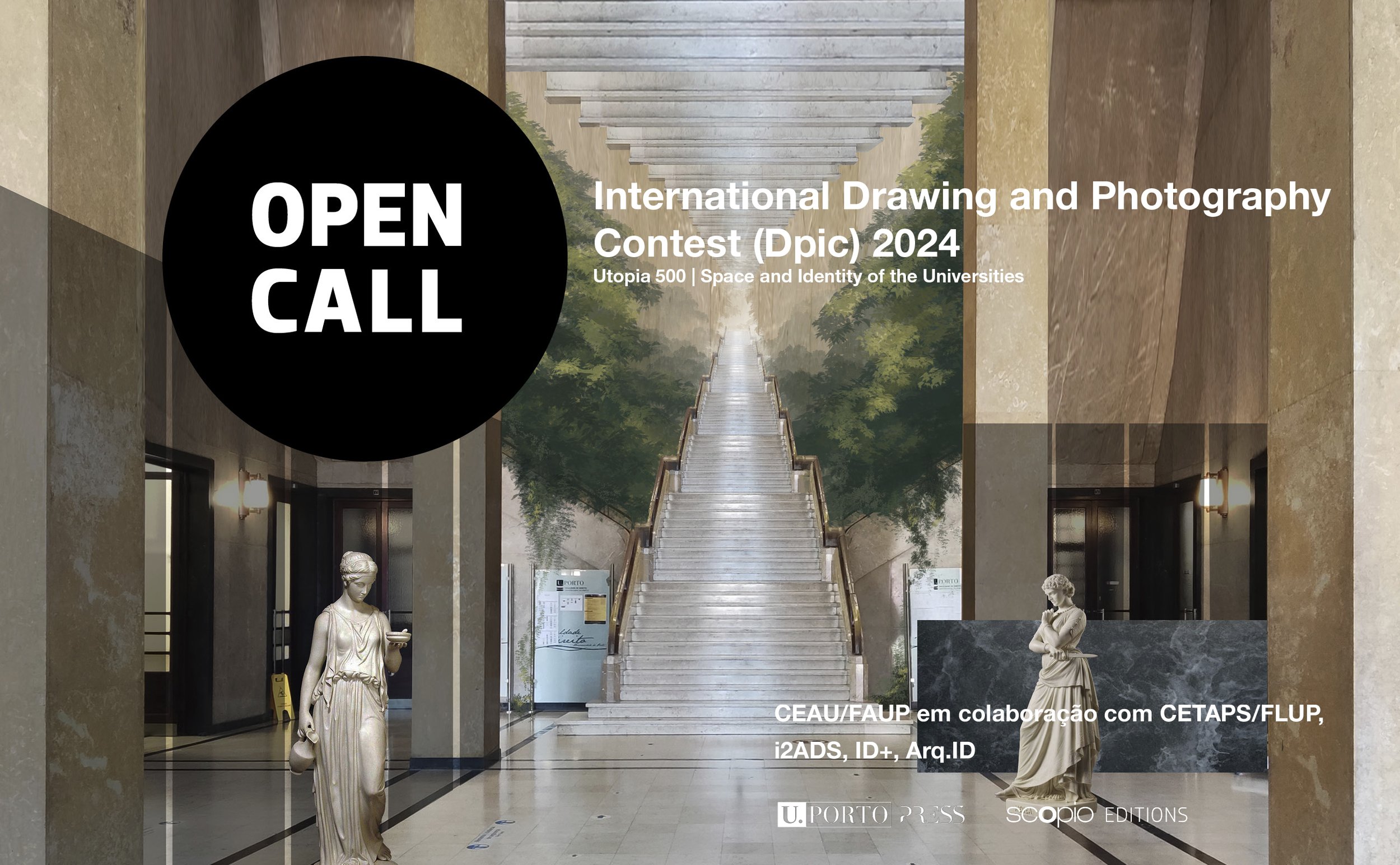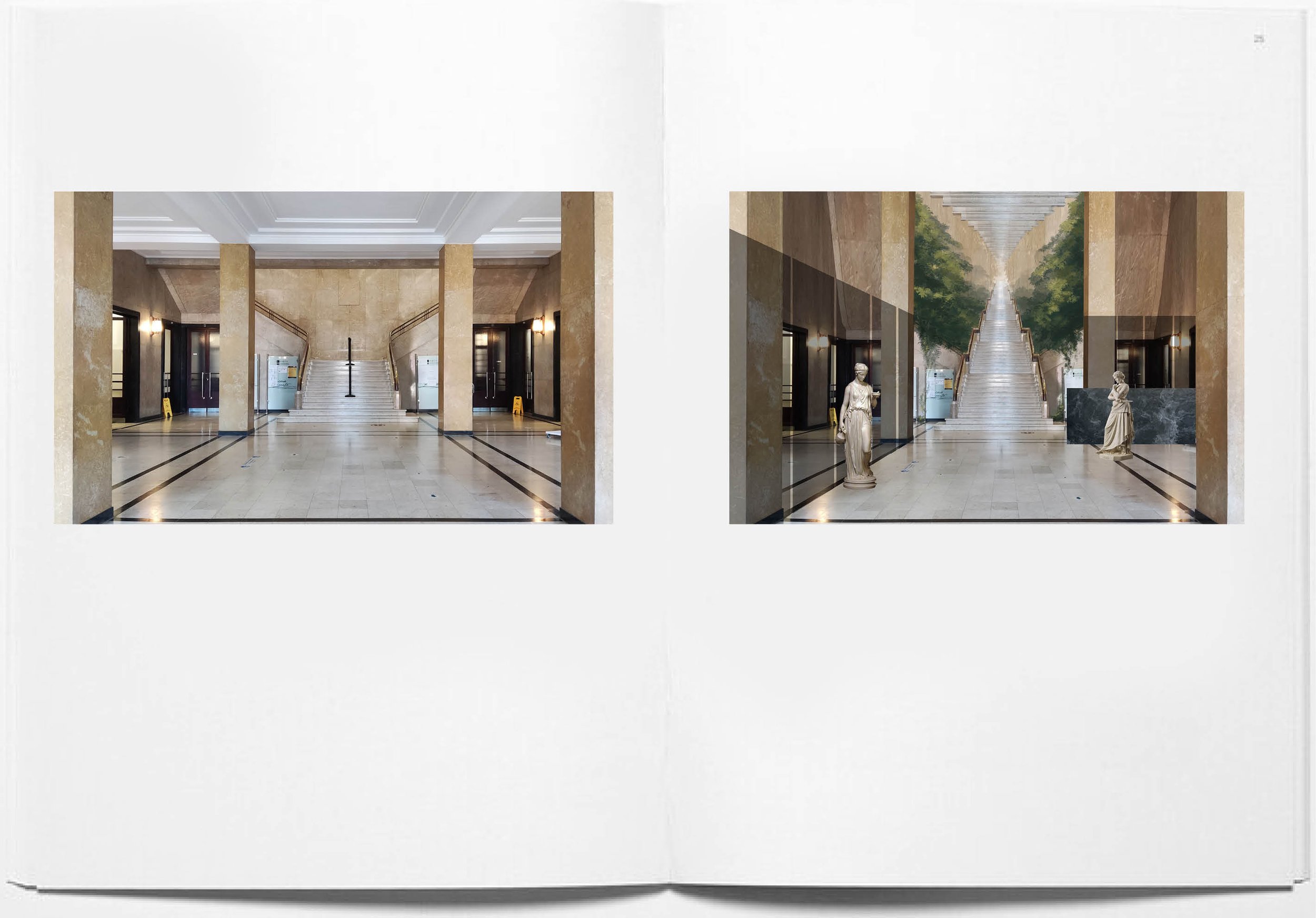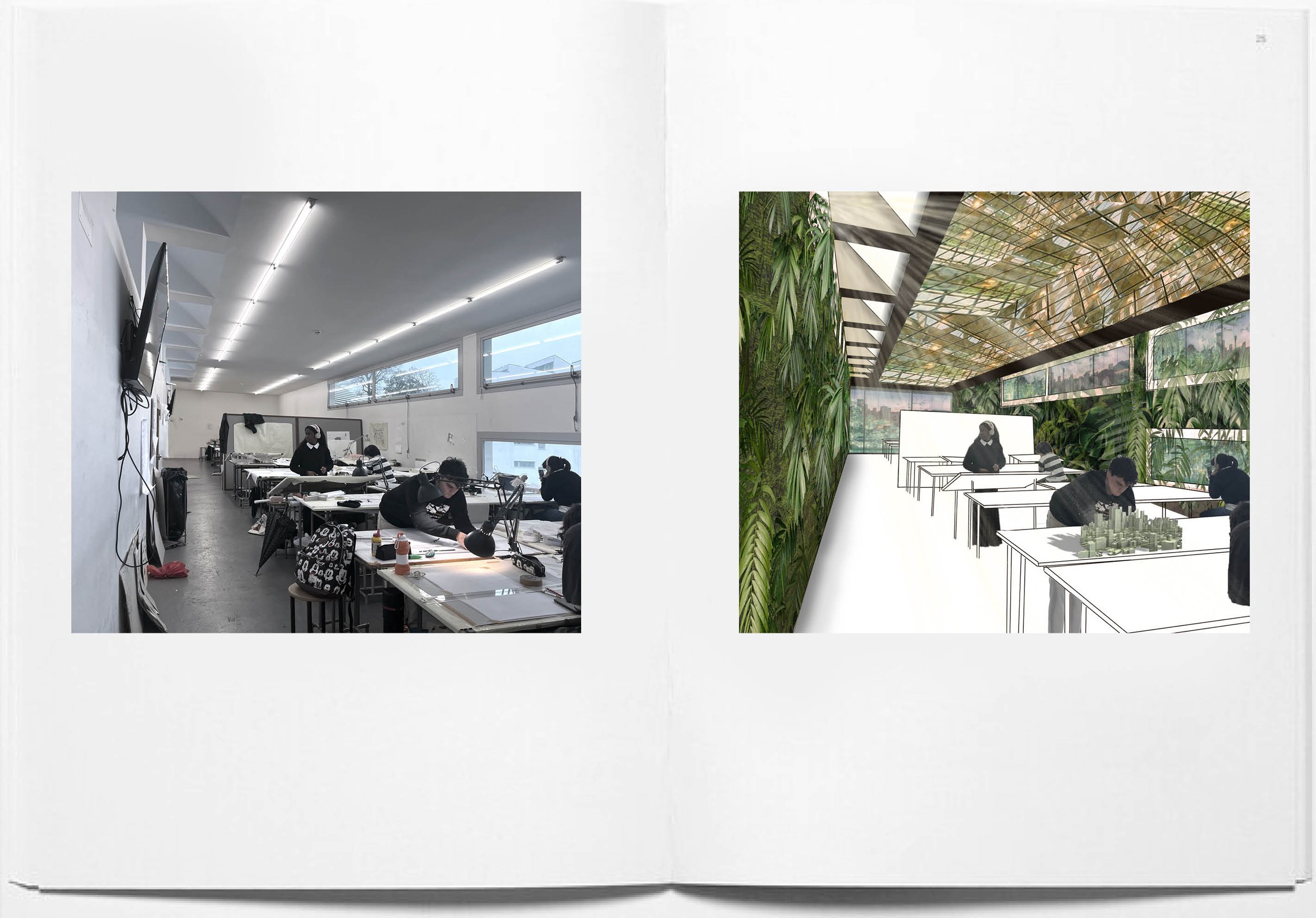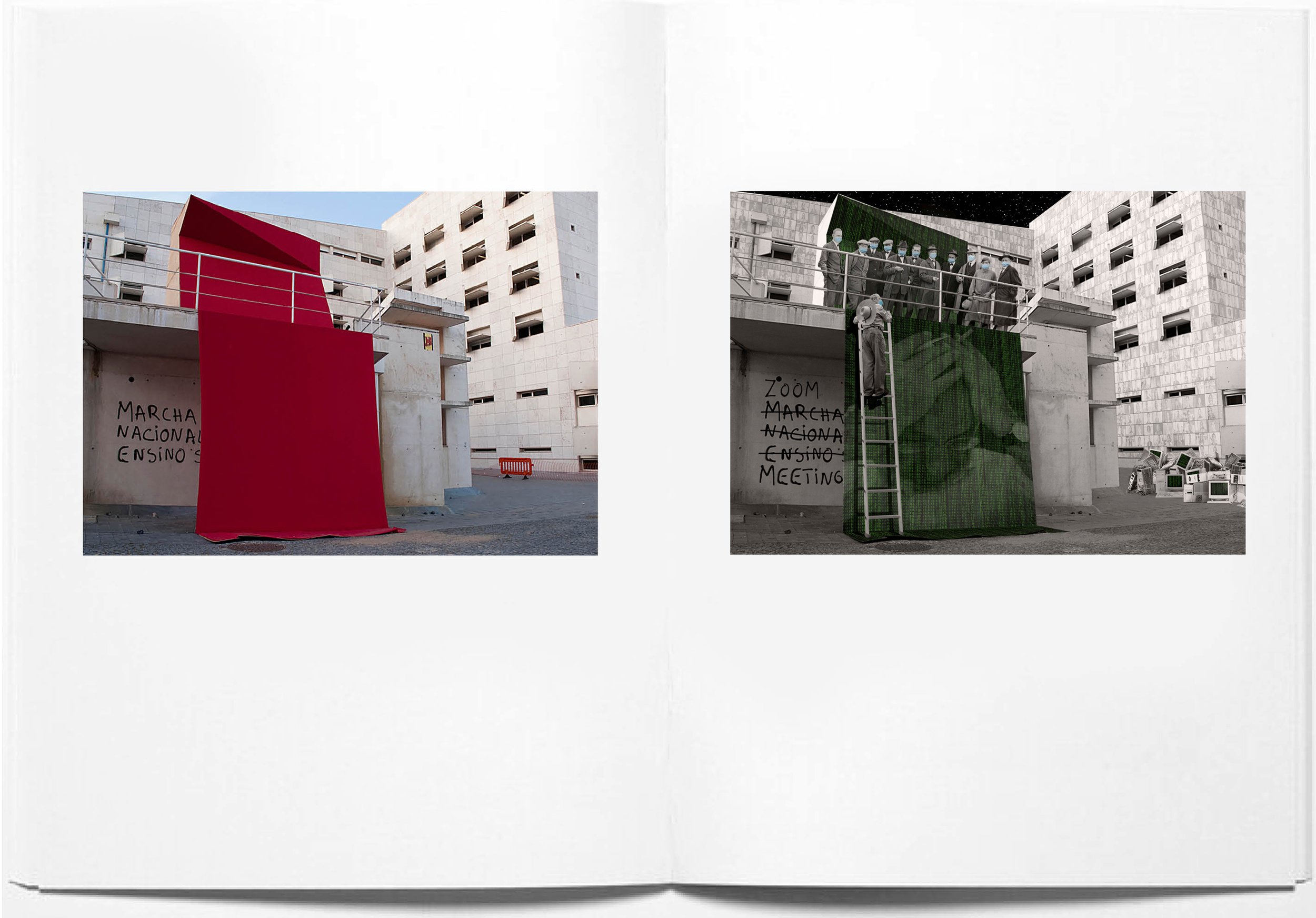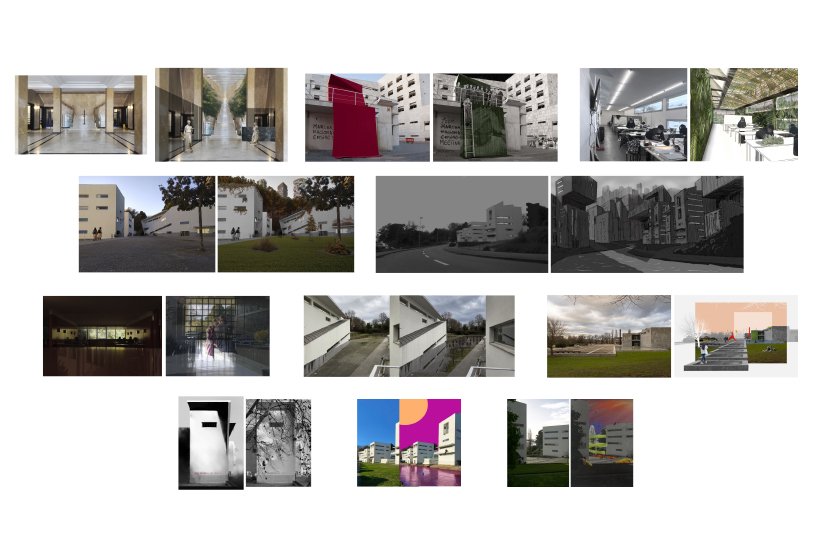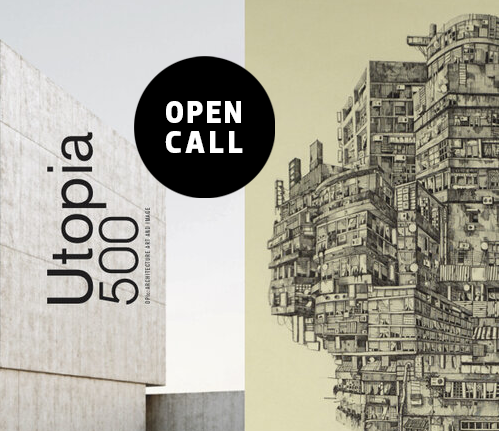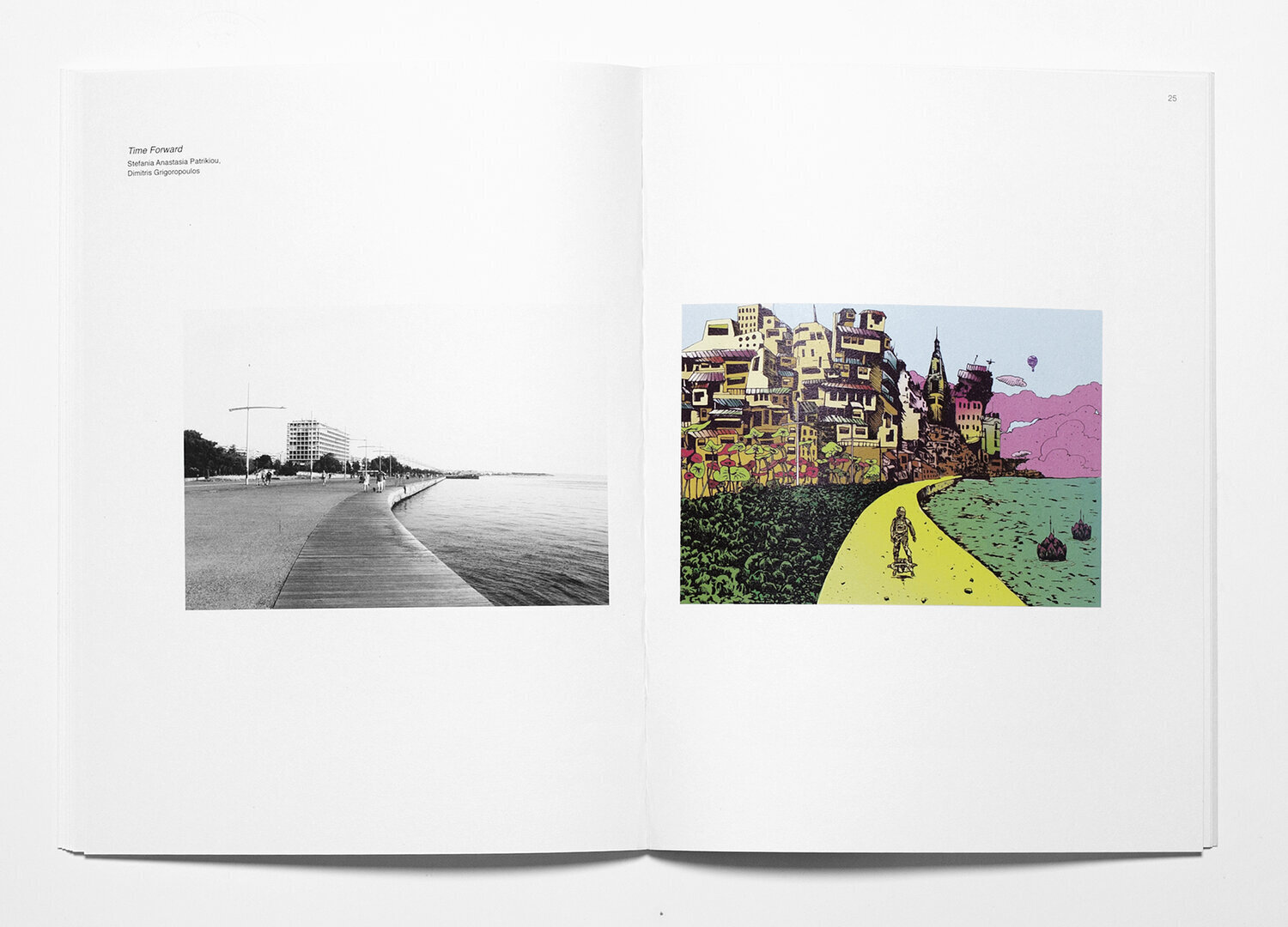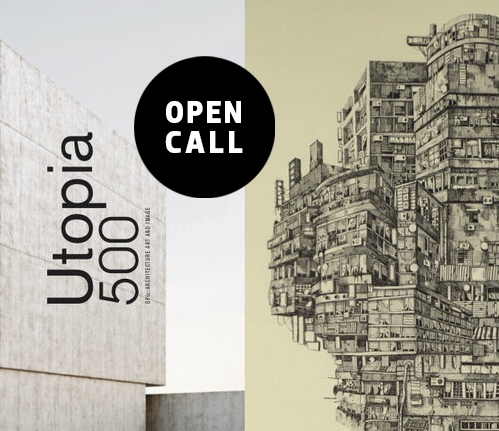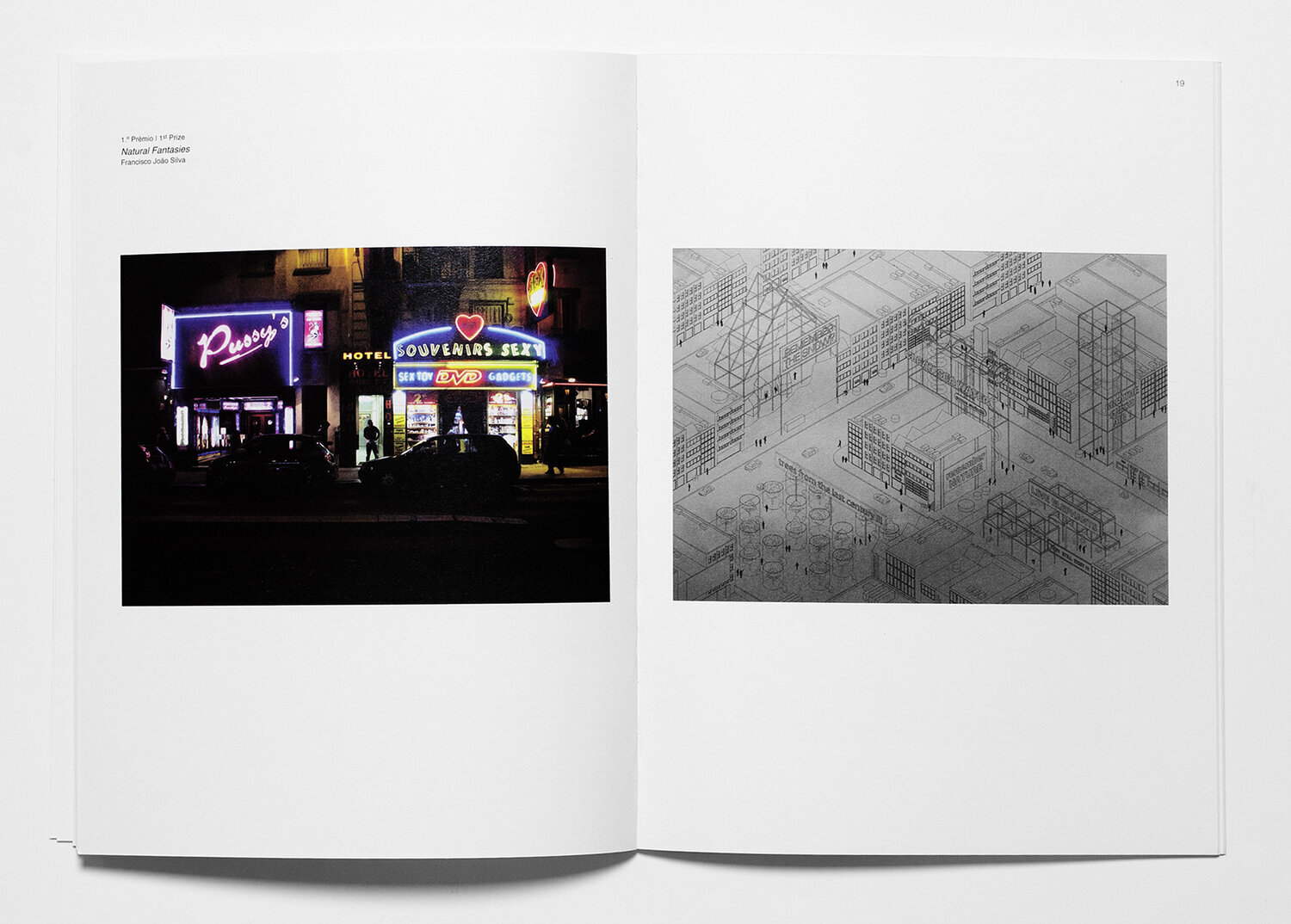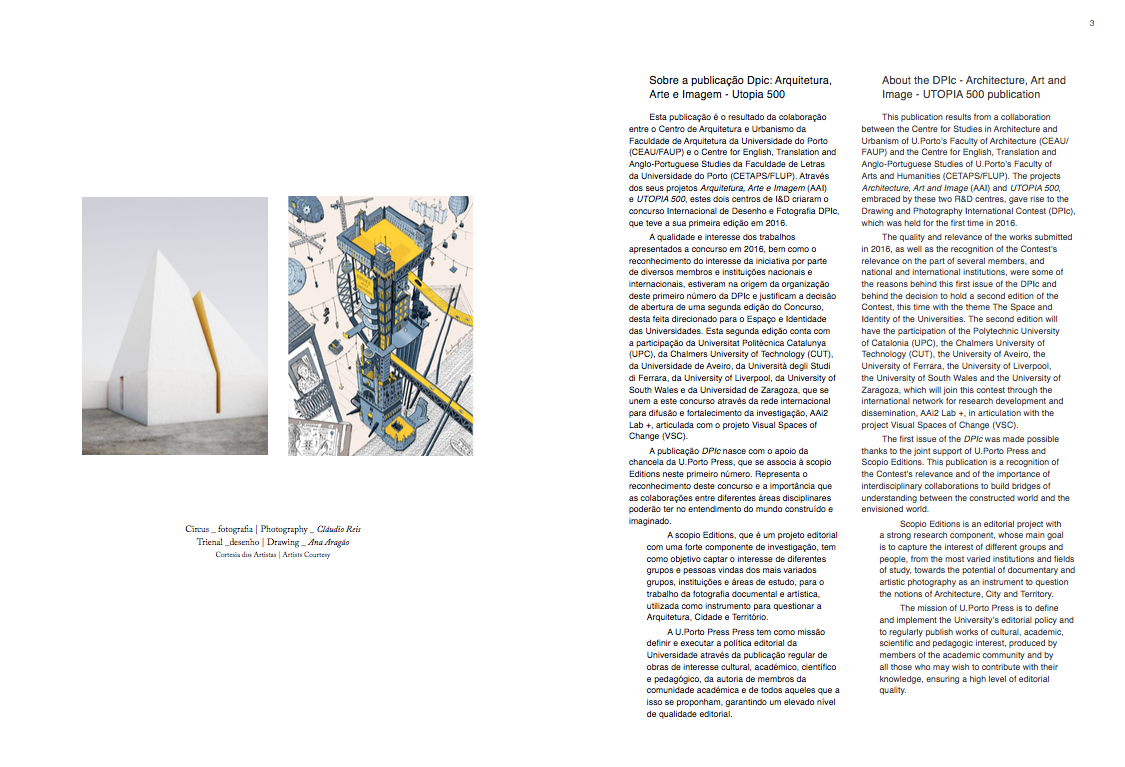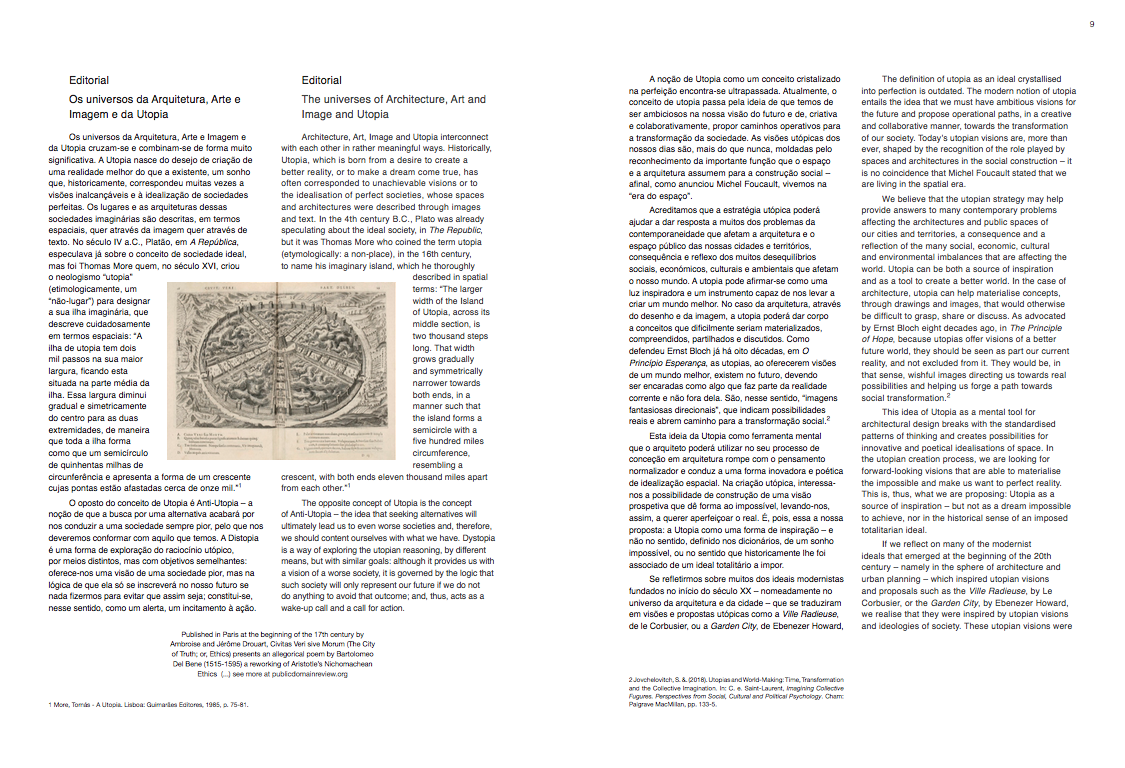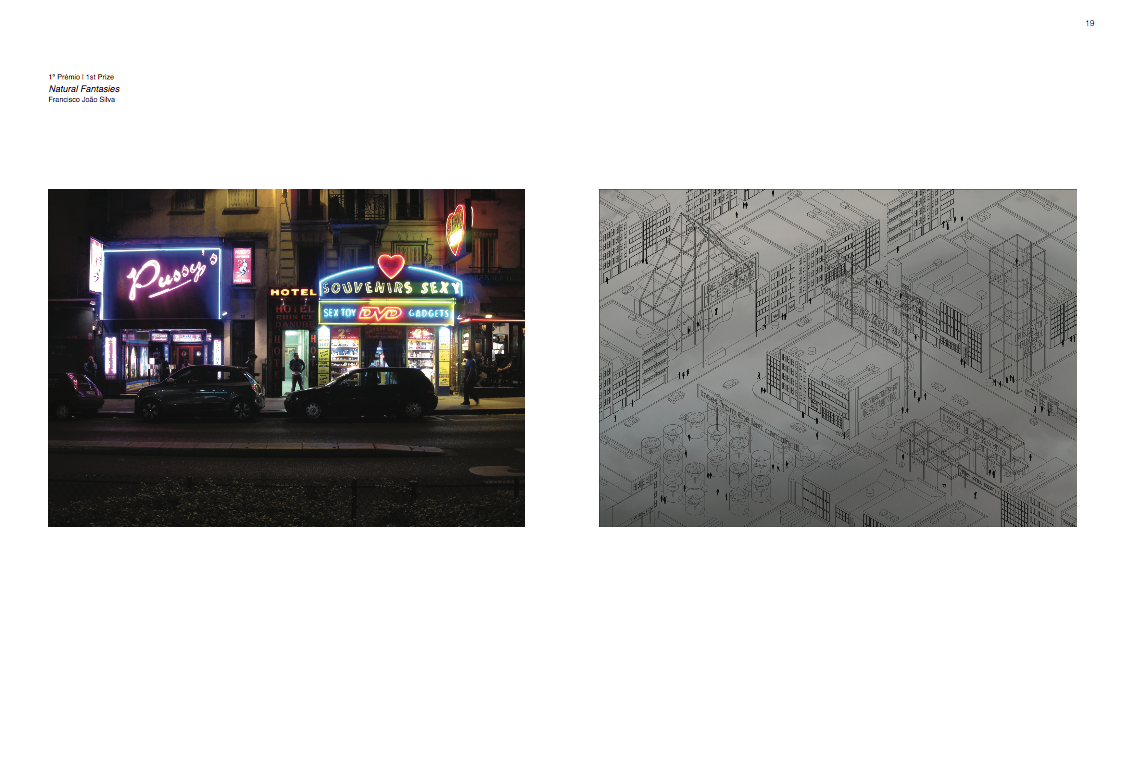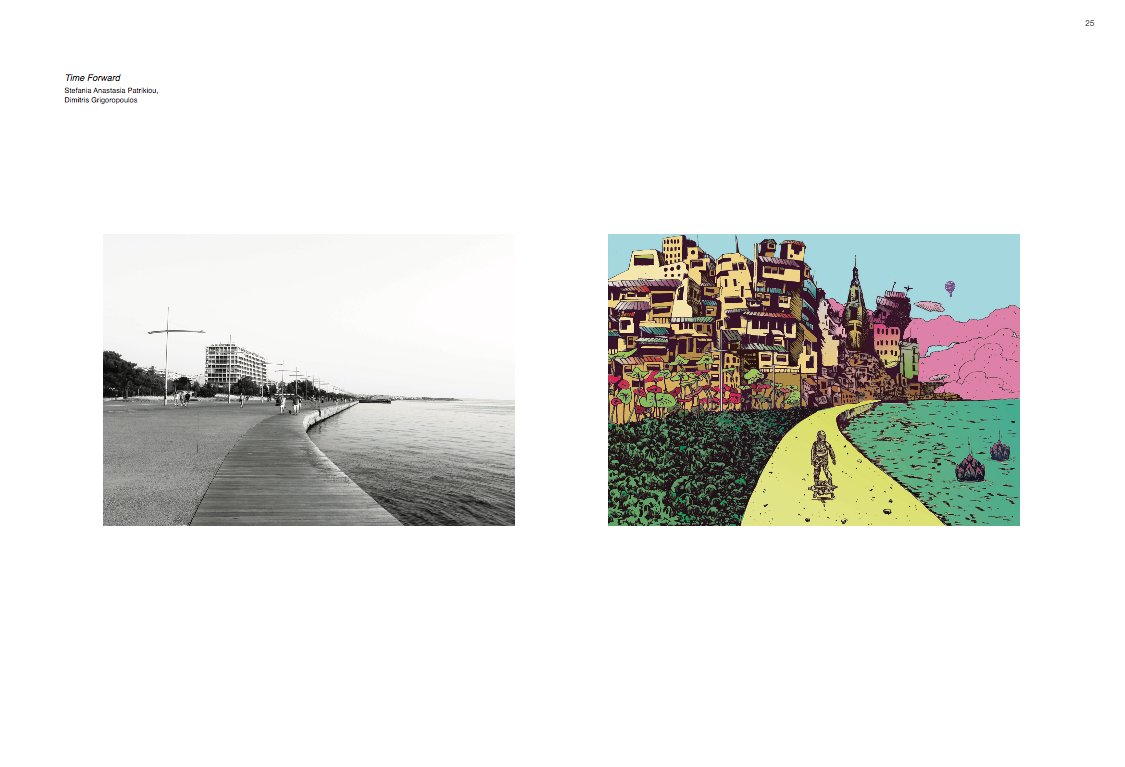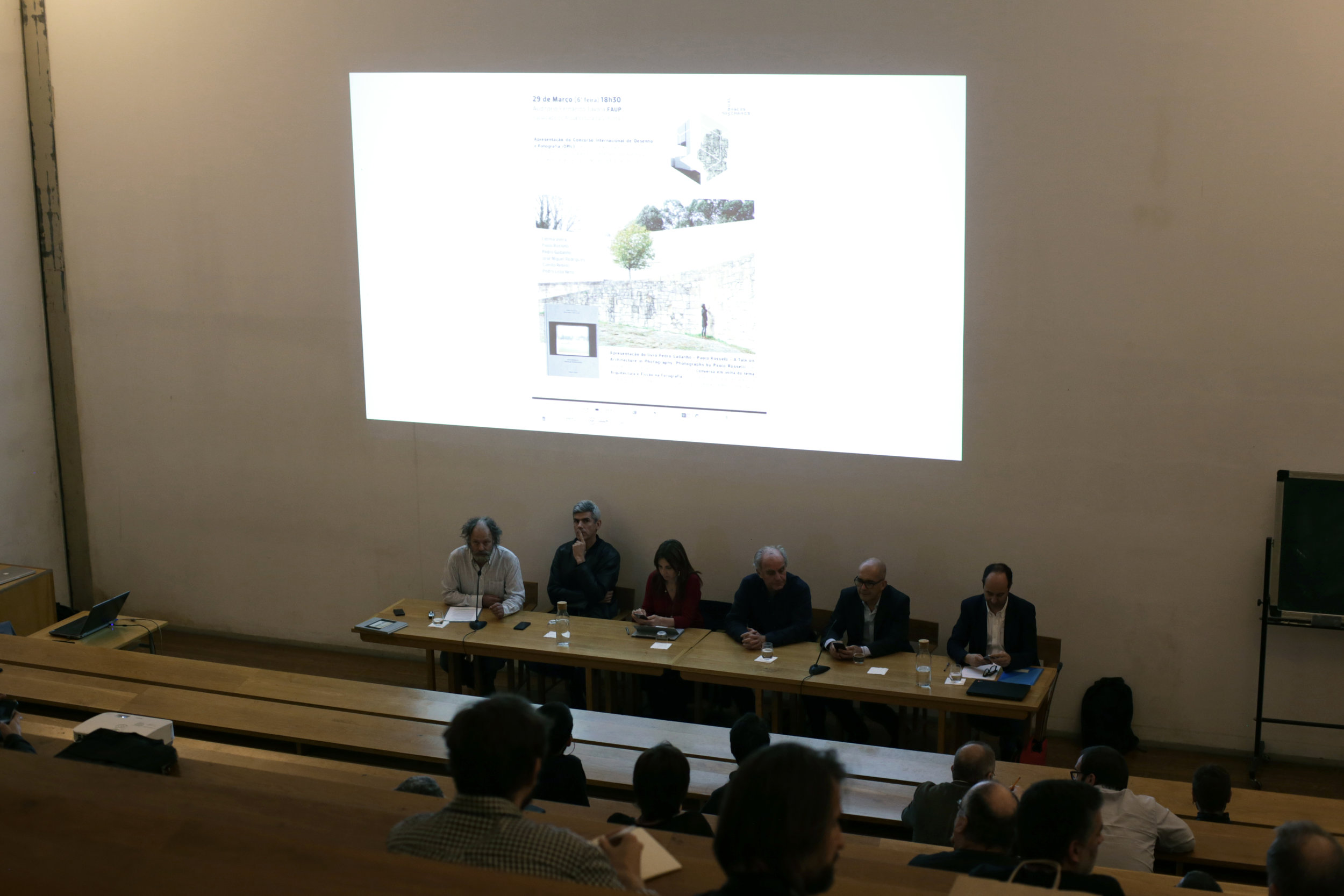CHAMADA ABERTA - CONCURSO INTERNACIONAL DE DESENHO E FOTOGRAFIA (DPIC) 2024
NOVO Prazo para a apresentação de projectos: 1 de Outubro, 2024
UTOPIA 500 | ESPAÇO E IDENTIDADE DAS UNIVERSIDADE
Prémios do júri
O júri atribuiu os seguintes prémios e menções honrosas:
1º Prémio
"Apropriação do Tempo" de Ana de Sousa, Carla Almeida, José Pedro Mendonça, Sofia Gameiro, Tatiana Monteiro e Tatiana Mota
Menções Honrosas
"Uma Chamada para Acordar" de Inês Nascimento
"Oásis de Educação" de Jerónimo Pérez Salazar Ruano, Imara Lidgett e Daniel Fernando Chica Estrella
O Júri do DPIc para 2023:
O júri foi composto por 5 pessoas, 3 das quais são Editores da scopio Magazine AAI, um estudante em representação do AEFAUP & COLETIVO PARTE, e o Júri Convidado que é um Professor, Investigador, bem como um Artista / Curador especialista no domínio das artes.
- Fátima Viera (Editora / FLUP / CETAPS)
- Maria Neto (Editor / CEAU / FAUP - UBI)
- José Carneiro (Editor / FBAUP / ID+ / i2ADS)
- Pedro Maia (Júri Convidado / ULP / FCAATI / Arq.ID)
- AEFAUP & COLETIVO PARTE
Sobre a avaliação do júri (Ler imagem no sentido dos ponteiros do relógio a partir do canto superior esquerdo)
A decisão colectiva do Júri, após votação de todas as candidaturas, foi atribuir o primeiro prémio a "Appropriation of Time" e duas menções honrosas a "A Wake-Up Call" e "Oasis of Education". Em termos gerais, pode observar-se que as candidaturas que obtiveram as pontuações mais elevadas partilham um equilíbrio harmonioso entre três dimensões-chave: a originalidade do conceito do projeto (ideia), a coerência da sua fundamentação (explicação escrita) e a eficácia da sua apresentação visual (imagens).
Todos os envios pré-seleccionados (Ler imagem no sentido dos ponteiros do relógio a partir do canto superior esquerdo)
“Appropriation of Time” de Ana de Sousa, Carla Almeida, José Pedro Mendonça, Sofia Gameiro, Tatiana Monteiro, and Tatiana Mota
“A Wake-Up Call” de Inês Nascimento
“Oasis of Education” de Jerónimo Pérez Salazar Ruano, Imara Lidgett and Daniel Fernando Chica Estrella
“Verdant Future” de Carolina Cunha, Duarte Amaral, Guilherme Ferreira, Matilde Oliveira, Mariana Afonso, Pedro Martins
“The Towers of Madness” de Ana Beatriz Oliveira, Inês Juliana Moura, Ivan Santos Ferreira, Matilde Vinagre, Océane Ribeiro, Augusto Savioli
“Per.me.á.vel” de Ana Lima Torres Matos Andrade, Jéssica Filipa Pinto Teixeira, Rui Alexandre de Mendonça Rodrigues Salgado Ramos, Sofia Monteiro Santos
“Underground Architecture” de Afonso Mendes, Barbara Nunes, Catarina Reis, Catarina Reis, Laura Nunes
“Hirade” Ana Pontes, de Ana Sofia Miranda, Bruna Pires, Daniel Figueiras, Maria Eduarda Hirade and Rodrigo Ferreira
“Cages” António Leite, de Carolina Andrade, Duarte Sousa, Luís Bouça e Raquel Guedes
“Towers over the Douro de ” António Freitas, Camila Silva, Maria Barbosa, Sara Mesquita e Tiago Correia
“Playground” de António Ramalho, Rodrigo Encarnação, Simão Alves
CHAMADA ABERTA | CONCURSO INTERNACIONAL DE DESENHO E FOTOGRAFIA (DPIc) UTOPIA 500 | ESPAÇO E IDENTIDADE
DAS UNIVERSIDADES
Estamos atualmente na terceira edição (2024) do Concurso Internacional de Desenho e Fotografia (DPIc), um concurso integrado na scopio Magazine Architecture, Art and Image direcionada para a Identidade dos espaços das Universidades e da experiência e trabalho docente abertos a todas as comunidades académicas, tanto em Portugal como no estrangeiro.
O concurso tem a coordenação conjunta do Centro de Estudos de Arquitectura e Urbanismo (CEAU), o Centro de I&D da Faculdade de Arquitectura da Universidade do Porto (FAUP), bem como do Centro de Estudos Anglo-Português, de Tradução e Inglês da Faculdade de Letras da Universidade do Porto (CETAPS/FLUP), i2ADS - Instituto de Investigação em Arte, Design e Sociedade, unidade de I&D com sede na Faculdade de Belas Artes da Universidade do Porto (FBAUP), Instituto de Investigação em Design, Media e Cultura [ID+] e o Instituto Arquitetura e Desenvolvimento (Arq.ID), sediado na Universidade Lusófona do Porto, . Conta também com o apoio institucional da Reitoria da Universidade do Porto, existindo uma parceria com a AEFAUP, sendo espectável o apoio de outras Associações de Estudantes da U.Porto.
As principais ideias presentes no Concurso de Desenho e Fotografia (DPIc) integrado na scopio Arquitectura, Arte e Imagem - UTOPIA é abrir as Universidades à Sociedade Civil através de projectos de Desenho e Fotografia, mostrando a riqueza multifacetada de actividades, experiências e arquitecturas relacionadas com as Instituições de Ensino e os seus diversos espaços de experiência e trabalho.
Prazo para a apresentação de projectos: 1 de Outubro, 2024
CONCURSO: REGRAS E PRÉMIOS
As principais ideias presentes no concurso internacional Concurso de Desenho e Fotografia (DPIc) integrado na scopio Magazine Architecture, Art and Image são as de abrir as Universidades à Sociedade Civil através de projetos de Desenho e Fotografia, mostrando a riqueza multifacetada de atividades, experiências e arquiteturas relacionadas às instituições de ensino e seus diversos espaços de experiência e trabalho.
Assim, o tema central do concurso é a ideia de Utopia e Espaços Visuais de Mudança, com foco nos espaços e identidades das Universidades, sendo Espaços Visuais de Mudança, a secção da revista Scopio Arquitetura, Arte e Imagem focada no uso da fotografia e outras mídias visuais para pesquisar, documentar e analisar diferentes aspectos da arquitetura, cidade e transformações do território.
Os candidatos, individualmente ou em equipa, devem explorar criativamente o universo do Desenho e da Fotografia comunicando, por um lado, uma compreensão acrescida e abrangente sobre cada Faculdade e a forma como se relaciona com a Cidade através de um olhar crítico e poético sobre os espaços e experiências que as caracterizam e identificam, revelando facetas que antes eram invisíveis ou esquecidas. Por outro lado, oferecer um olhar prospectivo e utópico sobre esses espaços de trabalho de pesquisa e ensino, o que significa um projeto onde o desenho e a fotografia estão presentes e informam o design do criador como instrumentos de pensamento e imaginação permitindo amplificar uma ideia de Arquitetura e da Cidade, bem como a apropriação e experiência dos seus espaços.
CAPÍTULO I - OBJECTIVOS
O objetivo geral desta iniciativa é criar novos canais de comunicação e divulgação entre as Universidades (e respetivas comunidades académicas) e a Sociedade Civil, abrindo estas instituições à sociedade através de diferentes interações, socializações, estudos e projetos de pesquisa, e promovendo uma troca interdisciplinar de conhecimentos e experiências entre diferentes campos do conhecimento e estratos sociais.
Objectivos específicos do concurso:
- Sensibilizar as novas gerações para o potencial transformador da Arquitectura e a sua relação com o conceito de Cidade, incentivando-as a explorar as ideias de Utopia e Espaços Visuais de Mudança, utilizando-as nos seus processos artísticos;
- Aumentar a sensibilização dos estudantes e dos cidadãos para a necessidade de pensarem em alternativas para os espaços educativos que frequentam, quer tenham ou não já sido criados;
- Promover uma melhor compreensão da imagem e das suas utilizações como método e meio de representação que abra novas vias de transformação e interacção com a arquitectura e os espaços urbanos;
- Realçar o potencial da Imagem como meio para atravessar fronteiras e deslocar fronteiras entre diferentes problemas e aplicações de Arquitectura e Arte, com foco nos espaços universitários.
CHAPTER II – THEME, MEDIA OF REPRESENTATION AND PARTICIPANTS
Os temas centrais do concurso são as ideias de Utopia e Espaços Visuais de Mudança. O desafio é apresentar um díptico visual (duas imagens) que pode, ou não, combinar fotografia e desenho. A primeira imagem, em formato A3, deve representar um espaço da Universidade (uma sala de aula, um auditório, uma área comum externa ou interna, etc) assim como é hoje. A segunda imagem, também em formato A3, deve oferecer uma visão voltada para o futuro e utópica que represente o potencial de mudança do mesmo espaço e as maneiras pelas quais ele pode ser experimentado. Ambas as imagens devem ser acompanhadas por um texto explicando as ideias expressas pelo díptico visual, com um mínimo de 200 e um máximo de 500 palavras.
Aceitamos candidaturas individuais e coletivas, mas incentivamos a formação de equipas multidisciplinares. As equipas podem ser constituídas por membros com diferentes perfis académicos; no entanto, pelo menos um dos membros deve estar ligado ao mundo da Arquitetura, Artes Plásticas ou Imagem, estar inscrito no ensino superior ou fazer parte de um centro de investigação. Cada indivíduo ou equipe pode enviar apenas um trabalho.
Esta iniciativa é dirigida especificamente a estudantes universitários nacionais e internacionais de qualquer área de estudo. A participação dos Conselhos de Estudantes é bem-vinda, pois facilita a formação de equipes multidisciplinares. Os parceiros institucionais do Concurso, os Conselhos de Estudantes da U.Porto e a Reitoria da U.Porto, serão responsáveis por receber os trabalhos submetidos, debater ideias e gerir a comunicação.
CAPÍTULO III - ESPECIFICAÇÕES TÉCNICAS
Os concorrentes devem usar, pelo menos, uma das duas formas de representação propostas - Desenho e/ou Fotografia - sem limitações em termos de manipulação, incluindo colagem e fotomontagem, ou em relação à combinação de ambas as formas de representação. As imagens submetidas ao concurso não devem conter qualquer assinatura ou marca d'água. Todas as imagens que contenham fotografias devem ter uma qualidade de impressão elevada, caso contrário, não poderão ser publicadas no catálogo da U. Porto Press and scopio Editions.
É objetivo deste concurso que cada narrativa visual - díptico - comunique um espaço real e idealizado capaz de florescer uma nova consciência sobre o lugar retratado, estimulando as pessoas a vivenciar esses espaços a partir de novas perspectivas.
Pretende-se também encorajar dípticos que correspondem a uma apropriação estética onde a fotografia arquitetônica e o desenho estão presentes de forma significativa e que são capazes de constituir pontos de partida para uma nova compreensão e percepção desses lugares de ensino. Visões capazes de documentar e registrar arquiteturas, experiências e lugares em permanente mudança, além de constituir uma forma de conhecimento do real em confronto com visões prospectivas e utópicas desses espaços.
CAPÍTULO IV - CANDIDATURAS, JÚRI E SELECÇÃO
Os trabalhos devem ser enviados por e-mail para dpic.vsc@arq. up.pt.
Para serem considerados completos, os pedidos devem incluir:
1) A ficha de inscrição devidamente preenchida;
2) Dois ficheiros separados, em formato JPEG ou TIFF (com um máximo de 5 MB cada), correspondentes à primeira e à segunda imagens do díptico visual (descritas no CAPÍTULO II do presente regulamento); os arquivos devem ser identificados com o nome abreviado do projeto seguido pelos números 1 e 2, respectivamente.
3) Na ficha de inscrição texto explicativo do díptico visual, com um mínimo de 200 e um máximo de 500 palavras.
O júri será composto por 5 pessoas, 3 das quais serão Editores da Scopio Magazine AAI, 1 estudante representando a AEFAUP e 1 Júri Convidado que pode ser curador, arquiteto, artista ou especialista do campo das artes. O vencedor selecionado pelo júri não pode ser contestado. Os membros dos órgãos de administração das instituições promotoras ou parceiras não podem participar no concurso.
Este concurso tem uma componente importante de rede e internet que são entendidos como instrumentos capazes de criar sinergias e estabelecer pontes comunicativas e permitir uma maior cobertura da mensagem, bem como criar sinergias com as diversas exposições relacionadas aos temas abordados com base nos conteúdos produzidos.
CAPÍTULO V - PRÉMIOS
Os trabalhos selecionados serão expostos e publicados no catálogo da U. Porto Press e da Scopio Editions. Todos os autores das obras selecionadas receberão um certificado. O júri selecionará um vencedor e, possivelmente, distinguirá um ou dois trabalhos com menções honrosas; os trabalhos premiados receberão um documento certificando a decisão do júri.
Os trabalhos serão ainda apresentados nos sites da U.Porto Press e da scopio Network, bem como na plataforma Sigarra da U.Porto. O vencedor do concurso receberá 3 (três) exemplares do catálogo da U.Porto Press e da Scopio Edition, e os autores das menções honrosas receberão 2 (dois) exemplares. O Comitê Organizador fará seus melhores esforços com os patrocinadores do Concurso para oferecer prêmios atraentes ao vencedor e aos autores distinguidos com menções honrosas.
CAPÍTULO VI - DISPOSIÇÕES GERAIS
Só serão aceites as obras que estejam em conformidade com o presente regulamento. Todas as outras candidaturas serão desclassificadas. A comissão organizadora só aceitará projectos de desenho e/ou fotografia que correspondam ao tema proposto e às normas mínimas de qualidade. A comissão organizadora não se responsabiliza por eventuais cópias digitais das fotografias apresentadas. Qualquer situação omissa será resolvida pelo Júri do Concurso. A comissão organizadora reserva-se o direito de publicar os trabalhos submetidos a concurso, nos termos da Lei n.º 2/99, de 13 de janeiro.
CAPÍTULO VII - COMISSÃO TÉCNICA E ORGANIZADORA
Grupo de investigação AAI (FAUP) integrado no centro de I&D da FAUP (CEAU) e no Centro de Estudos de Inglês, Tradução e Anglo-Portugueses da Faculdade de Letras da Universidade do Porto (CETAPS/FLUP), i2ADS - Instituto de Investigação em Arte, Design e Sociedade é uma unidade de I&D sediada na Faculdade de Belas Artes da Universidade do Porto (FBAUP), no Instituto de Investigação em Design, Media e Cultura [ID+] e no Instituto Arquitetura e Desenvolvimento (Arq.ID), sediado na Universidade Lusófona do Porto, contando com o apoio institucional da Reitoria da U.Porto e em parceria com a AEFAUP, contando com o apoio de outras Associações de Estudantes da U.Porto.
Organização
Fátima Vieira (coordenação)
José Carneiro
Luís Espinheira
Maria Neto
Pedro Maia
Pedro Leão Neto (coordenação)
Rede de Faculdades / Centros de Investiagçãos Associados
Pedro Maia (coordenação)
Luís Espinheira
Parcerias: UTOPIA 500, e AEFAUP, com o apoio institucional da Reitoria da U.Porto.
Contactos: AAI / CEAU / FAUP
Universidade do Porto
Via Panorâmica s/n 4150-564 Porto
dpic.vsc@arq.up.pt
+inf | institutional partners
scopiomagazine AAI
https://www.up.pt/revistas/index.php/scopio/announcement/view/24
FAUP
https://sigarra.up.pt/faup/pt/noticias_geral.ver_noticia?p_nr=81063
FBAUP
https://sigarra.up.pt/fbaup/en/noticias_geral.ver_noticia?p_nr=33102
ULP
https://arquitetura.ulp.pt/noticias/dpic-224/
U.PORTO PRESS
https://www.up.pt/press/concurso-internacional-de-desenho-e-fotografia-dpic-da-o-mote-para-nova-publicacao-da-u-porto-press-e-scopio-editions
Atlas
https://desenho.org/

